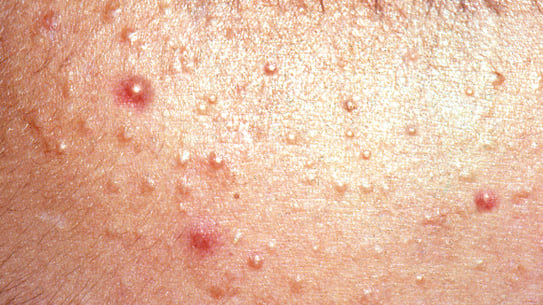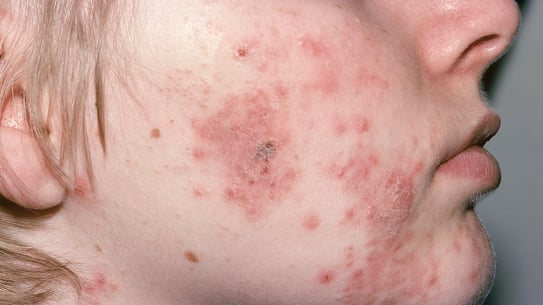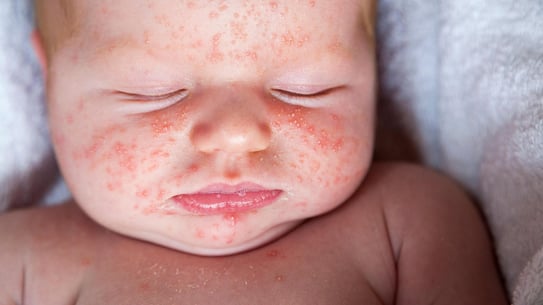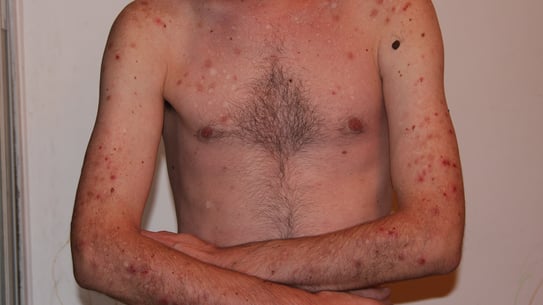1 professionals
Acne: Clinic, diagnosis and treatment
Acne: Clinic, diagnosis and treatment
URL copied
Medical editor: Dr. Marina Alexandre, Dermatologist, Avicenne Hospital, France.
Related topics
There are several determining factors in the development of acne:
The different forms of acne are classified into three categories: common forms, severe forms and specific forms2:







There are 6 levels of acne severity2,6. They are described according to a global severity assessment tool: Global Acne Evaluation (GEA)6.

The different lesions found in acne have been classified as such2,6:
Two types: closed comedones and open comedones:
The French Society of Dermatology has established an algorithm7 for the management of acne according to the patient's symptoms. It is described below:

What treatment can be offered to a pregnant woman?
What to advise to the mother for the acne of the infant?
What contraceptive methods are suitable for this condition?
What specific phenomenon explains infant acne?
It seems to me that the copper IUD does not worsen acne and that estrogen-progestins improve it, is this true?
How does the hormonal IUD affect acne?
What is the difference between papules, pustules, comedones and microcysts?
What is Propionibacterium?
Create easily your professional account
I create my accountAccess exclusive business services unlimited
Access valuable features : audio listening & tools sharing with your patients
Access more than 150 product sheets, dedicated to professionals
